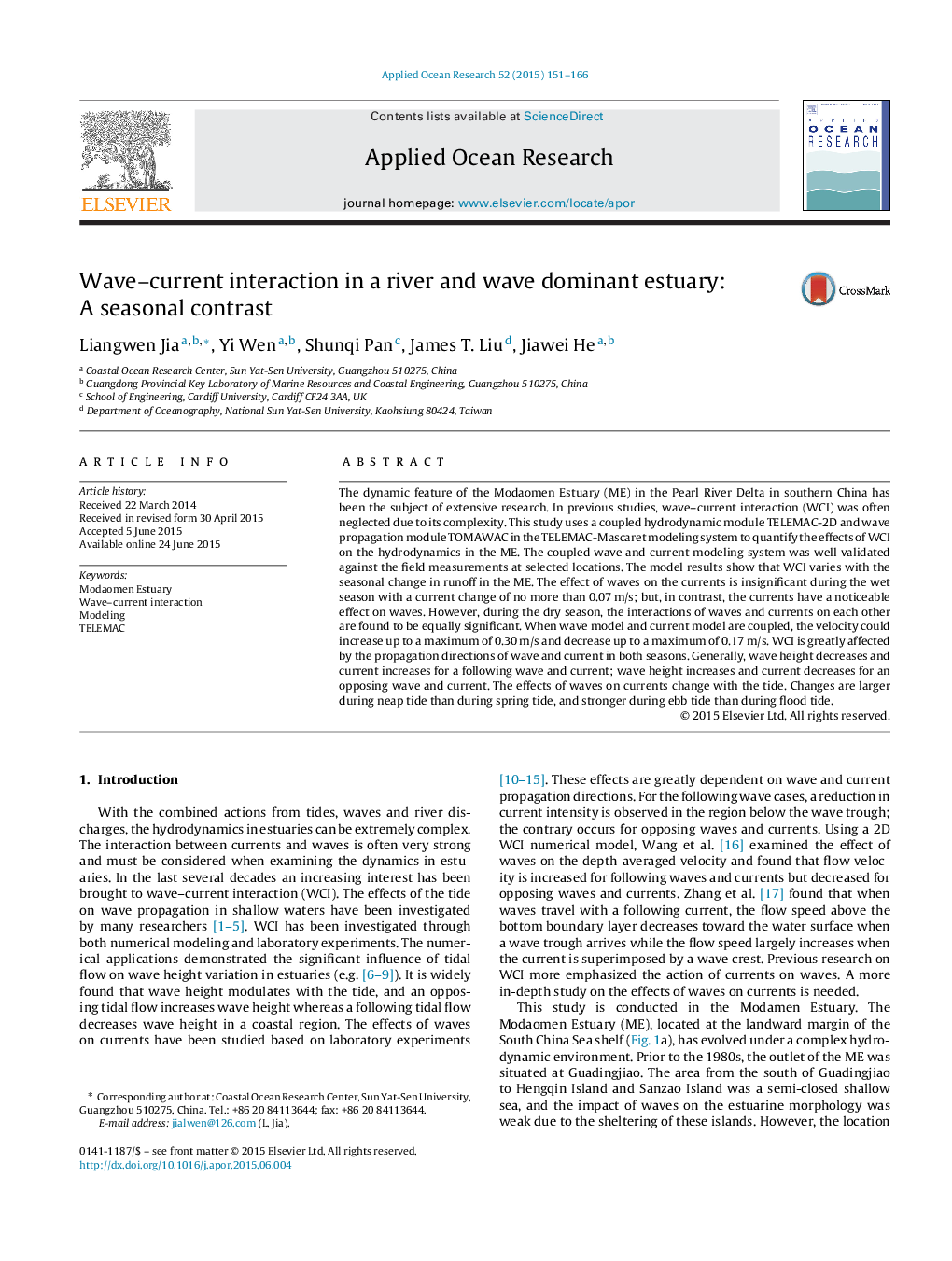| کد مقاله | کد نشریه | سال انتشار | مقاله انگلیسی | نسخه تمام متن |
|---|---|---|---|---|
| 1719939 | 1520251 | 2015 | 16 صفحه PDF | دانلود رایگان |
• A coupled model is established to contrast the seasonal variation of WCI in the Modaomen Estuary, China.
• The WCI varies with the seasonal change in runoff.
• The waves bring a minor effect on the current in wet season.
• Both the effects of wave on the current and current on the wave are significant in dry season.
• The effects of waves on currents change with the tide. Changes are larger during neap tide than during spring tide, and stronger during ebb tide than during flood tide.
The dynamic feature of the Modaomen Estuary (ME) in the Pearl River Delta in southern China has been the subject of extensive research. In previous studies, wave–current interaction (WCI) was often neglected due to its complexity. This study uses a coupled hydrodynamic module TELEMAC-2D and wave propagation module TOMAWAC in the TELEMAC-Mascaret modeling system to quantify the effects of WCI on the hydrodynamics in the ME. The coupled wave and current modeling system was well validated against the field measurements at selected locations. The model results show that WCI varies with the seasonal change in runoff in the ME. The effect of waves on the currents is insignificant during the wet season with a current change of no more than 0.07 m/s; but, in contrast, the currents have a noticeable effect on waves. However, during the dry season, the interactions of waves and currents on each other are found to be equally significant. When wave model and current model are coupled, the velocity could increase up to a maximum of 0.30 m/s and decrease up to a maximum of 0.17 m/s. WCI is greatly affected by the propagation directions of wave and current in both seasons. Generally, wave height decreases and current increases for a following wave and current; wave height increases and current decreases for an opposing wave and current. The effects of waves on currents change with the tide. Changes are larger during neap tide than during spring tide, and stronger during ebb tide than during flood tide.
Journal: Applied Ocean Research - Volume 52, August 2015, Pages 151–166
